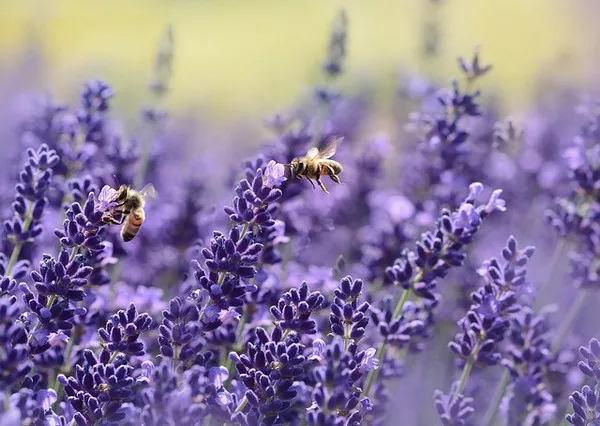Butterflies are not only beautiful creatures to behold but also vital pollinators in our ecosystems. With their delicate wings and vibrant colors, they bring joy and fascination to any garden they visit. If you’re looking to create a haven for these enchanting insects, planting the right flowers is key. In this guide, we’ll explore the best flowers to plant to attract butterflies to your garden, providing not only sustenance but also a sanctuary for these delightful creatures.
Understanding Butterfly Behavior and Preferences
Before delving into specific flowers, it’s essential to understand the behavior and preferences of butterflies. Butterflies are attracted to flowers primarily for nectar, which serves as their main food source. However, they are also selective about the flowers they visit, preferring those with certain characteristics:
1. Bright Colors: Butterflies are drawn to bright colors such as red, orange, yellow, and purple. These colors are highly visible to them and signal the presence of nectar-rich flowers.
2. Fragrance: Fragrant flowers are particularly appealing to butterflies. They use their keen sense of smell to locate suitable food sources.
3. Shape and Structure: Butterflies have a unique feeding mechanism that involves uncoiling their proboscis to reach nectar deep within flowers. Flowers with a tubular shape or those with easily accessible nectar are preferred.
4. Continuous Bloom: Butterflies require a consistent supply of nectar throughout their adult life stages. Planting flowers that bloom at different times ensures a sustained food source.
By considering these factors, you can create a garden that not only attracts butterflies but also supports their lifecycle.
Top Flowers to Attract Butterflies
1. Butterfly Bush (Buddleja davidii): As the name suggests, the butterfly bush is a favorite among butterflies. Its long spikes of fragrant flowers in shades of purple, pink, and white attract various butterfly species, including monarchs, swallowtails, and painted ladies.
2. Milkweed (Asclepias): Milkweed is essential for supporting monarch butterflies, as it is the sole food source for their caterpillars. Planting different varieties of milkweed, such as common milkweed and swamp milkweed, ensures a continuous supply of food for monarchs throughout their lifecycle.
3. Lavender (Lavandula): Loved for its fragrant blooms and silvery foliage, lavender is a magnet for butterflies, bees, and other pollinators. Its compact spikes of purple flowers provide a rich source of nectar, attracting species like the swallowtail and painted lady.
4. Coneflower (Echinacea): Coneflowers are not only visually stunning but also irresistible to butterflies. Their daisy-like blooms in shades of pink, purple, and white provide ample nectar and serve as landing pads for visiting butterflies.
5. Black-eyed Susan (Rudbeckia hirta): Black-eyed Susans add a burst of cheerful color to any garden and are highly attractive to butterflies. With their golden-yellow petals and dark centers, they provide a valuable food source for species like the eastern tiger swallowtail and pearl crescent.
6. Verbena (Verbena bonariensis): Verbena’s clusters of small, fragrant flowers atop slender stems are a favorite among butterflies. Its airy structure allows butterflies easy access to nectar while offering a delicate aesthetic to the garden.
7. Zinnia (Zinnia elegans): Zinnias are prized for their vibrant colors and long-lasting blooms, making them a popular choice for butterfly gardens. Their flat, daisy-like flowers come in a variety of hues, attracting butterflies of all species.
8. Phlox (Phlox paniculata): Phloxes are known for their profusion of fragrant flowers in shades of pink, purple, white, and red. Their clustered blooms provide a rich source of nectar and serve as a focal point for butterflies in the garden.
9. Lantana (Lantana camara): Lantana’s clusters of tiny flowers in shades of red, orange, yellow, and pink are a favorite among butterflies and other pollinators. Its extended blooming period ensures a continuous food source throughout the season.
10. Aster (Asteraceae): Asters are late-season bloomers that provide vital nourishment for butterflies preparing for migration or hibernation. Their daisy-like flowers in shades of purple, blue, and pink attract butterflies seeking fuel for their journey.
Creating a Butterfly-Friendly Habitat
In addition to planting butterfly-attracting flowers, there are several other ways to enhance your garden’s appeal to these beautiful insects:
1. Provide Shelter: Butterflies seek shelter from harsh weather conditions and predators. Incorporate shrubs, trees, and tall grasses into your garden to create sheltered areas where butterflies can rest and seek refuge.
2. Offer Host Plants: Many butterfly species lay their eggs on specific host plants, which serve as food for their caterpillars. Research the native butterflies in your area and plant host plants such as milkweed, parsley, and fennel to support their lifecycle.
3. Avoid Pesticides: Pesticides can be harmful to butterflies and other beneficial insects. Opt for natural pest control methods and avoid using chemical pesticides in your garden.
4. Provide Water: Butterflies need water for drinking and regulating their body temperature. Create shallow puddles or place a shallow dish filled with water in your garden to provide a water source for butterflies.
5. Create Sunlit Areas: Butterflies are ectothermic creatures that rely on the sun’s warmth to regulate their body temperature. Ensure your garden has sunny spots where butterflies can bask and soak up the sun’s rays.
By incorporating these elements into your garden design, you can create a welcoming habitat that not only attracts butterflies but also supports their entire lifecycle.
Conclusion
Attracting butterflies to your garden is a rewarding endeavor that benefits both the environment and your enjoyment of nature’s beauty. By planting a variety of butterfly-friendly flowers, providing essential resources, and creating a hospitable habitat, you can transform your garden into a haven for these enchanting insects. Whether you’re a seasoned gardener or just starting, creating a butterfly garden is a fulfilling way to contribute to conservation efforts and connect with the natural world around you. So roll up your sleeves, grab your gardening tools, and get ready to welcome an array of fluttering visitors to your garden oasis.


